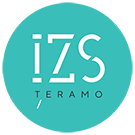Animal MovementsArrival at the holdingWhen an animal is introduced into the holding, the breeder has to check first of all if the animal is correctly identifiied, i.e. if it has eartags correctly attached in both of the ears, if it has the Passport exhaustively filled in with the all right details about the animal, if the individual code written in the passport coincides with that printed on the eartags, and it is accompanied by Model 4, according to with Annex !V to D.P.R. no. 317 of 30 April 1996, with the health attestation (Part E) issued by the veterinary surgeon of the Local Health Authority (ASL) of origine. The breeder must then update the animal's individual Passport (the back), noting the change of ownership by adding his own holding code, his own fiscal coderence, the date of arrival into the herd and his signature. The breeder's responsibilities from now are to update the holding Register of arrival and departing, not later than three days after the introduction of the animal, writing besides the identification details, the purchase (letter "A"), the date of birth, the date of arrival, the holding of origine and the details of Model 4 (in the boxes highlighted in yellow). 
(1) For animals arriving at the holding, the code of the source holding must be transcribed. (2) For animals leaving the holding, the code of the destination holding must be transcribed. (3) For animals coming from other countries, the number of the accompanying health certificate issued by the competent health authorities must be indicated. (4) For animals which have died on the holding, the number of the certificate issued by the competent health authorities must be indicated. The breeder must notify the animal movement, not later 7 days to the Veterinary Service of the competent Local Health Authority (ASL), by sending a copy of Model 4 completed with identification data of the animal (using, for example, a photostat of the Passport), or, if he has a smart card (authentication certificate), by registering the animal in the National DataBase (BDN) directly online connecting to the web site https://anages.izs.it Importatin from other countriesThe animal introduced into the holding from a Member State within the European Union, keeps the eartags and the Passport issued by the country of origin.
If, on the other hand, it comes from a country outside the EU, the animal must be retagged with a new eartags in conformity with EU normative, not late then 20 days after theintroduction (unless it is addressed to a slaughterhouse within 20 days from the importation). The animal must also be recorded in the holding Register of arrival and departing and in the BDN, as already described for animals born in the holding, and must be provided with the Passport in conformity with EU regulations, issued by the Veterinary Service of the competent local ASL. Sale or movement towards another holdingThe breeder has to:
If the breeder has a smart card, he must register online in the BDN not late tha 7 days the departure of the animal from the holding, by connecting to the web site https://anages.izs.it 
(1) For animals arriving at the holding, the code of the source holding must be transcribed. (2) For animals leaving the holding, the code of the destination holding must be transcribed. (3) For animals coming from other countries, the number of the accompanying health certificate issued by the competent health authorities must be indicated. (4) For animals which have died on the holding, the number of the certificate issued by the competent health authorities must be indicated. Movement to the slaughter - houseThe breeder has to:
If the breeder has a smart card, he must register online in the BDN not late than 7 days the departure of the animal, by connecting to the web site https://anages.izs.it 
(1) For animals arriving at the holding, the code of the source holding must be transcribed. (2) For animals leaving the holding, the code of the destination holding must be transcribed. (3) For animals coming from other countries, the number of the accompanying health certificate issued by the competent health authorities must be indicated. (4) For animals which have died on the holding, the number of the certificate issued by the competent health authorities must be indicated. Death of an animal into the holdingThe breeder has to:
If the breeder has a smart card, he must register the death of the animal online in the BDN, by connecting to the web site https://anages.izs.it
© IZSAM August 2016
|
|
Istituto Zooprofilattico Sperimentale
dell'Abruzzo e del Molise "G. Caporale"
Campo Boario | 64100 TERAMO | ITALIA
Telefono 0039.0861.3321 | Fax 0039.0861.332251
e-mail: archivioeprotocollo@izs.it
Posta elettronica certificata: protocollo@pec.izs.it
Partita IVA: 00060330677
Codice Fiscale: 80006470670


